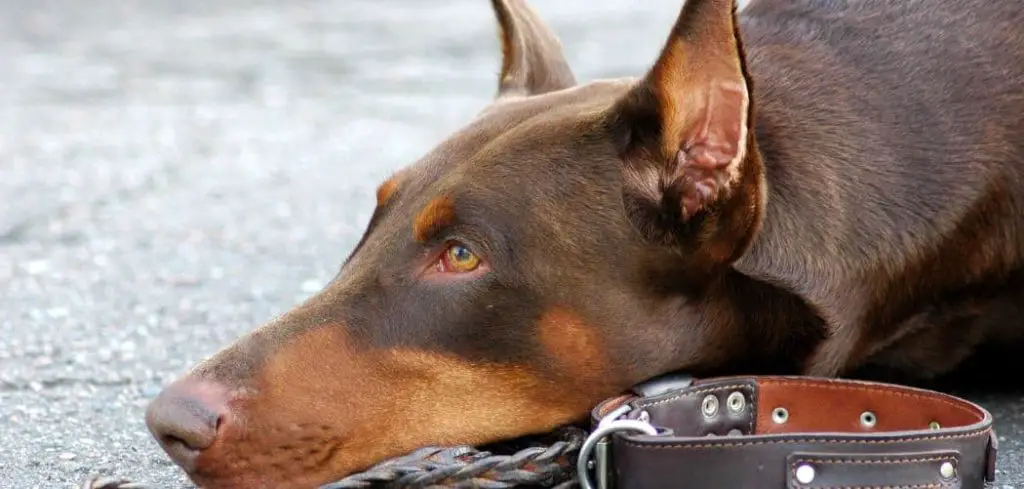If your dog is lethargic not eating and has blood in stool, it’s an alarming combination that should never be ignored.
While a single streak of blood might not seem serious, when paired with low energy and appetite loss, it could point to infection, gastrointestinal inflammation, or internal bleeding. These symptoms often signal that your dog is feeling seriously unwell.
We outline why these signs occur together, what they could mean, and when it’s time to get your dog to the vet.
Dog Lethargic Not Eating Blood in Stool: Why It Happens
When your dog is lethargic not eating blood in stool becomes a symptom, possible causes include gastrointestinal infections, dietary indiscretion, parasites, toxin exposure, pancreatitis, colitis, or serious conditions like parvovirus or hemorrhagic gastroenteritis.
These conditions can range from mild to life-threatening, and their symptoms often overlap.

Dog Lethargic Not Eating Blood in Stool: Common Causes
Gastrointestinal Infections or Inflammation
Bacterial, viral, or parasitic infections in the digestive tract can inflame the intestines, leading to bloody diarrhea, fatigue, and refusal to eat.
These infections often come on suddenly and may also involve vomiting, fever, or dehydration.
Common culprits include:
Salmonella
Clostridium
Giardia
Canine parvovirus (especially in unvaccinated puppies)
These conditions often require prompt treatment with fluids, medications, and possibly hospitalization—especially if blood loss or dehydration is severe.
Dietary Indiscretion (Eating Something Bad)
Dogs are notorious for eating things they shouldn’t—spoiled food, garbage, bones, or toxic substances.
When this happens, the digestive tract can become irritated or even damaged, resulting in bloody stool, nausea, and lethargy.
Other signs may include:
Vomiting
Gagging or drooling
Abdominal pain
Sudden loss of appetite
If you suspect your dog ate something harmful, call your vet immediately—especially if you see dark, tarry stool (which may indicate internal bleeding).
Related: My dog is lethargic and not eating (Causes and when to worry)
Parasites
Intestinal parasites like hookworms, whipworms, or coccidia are common in dogs and can lead to blood in the stool.
These parasites attach to the intestinal lining and cause irritation, which may result in:
Fatigue
Poor appetite
Weight loss
Anemia
Puppies and dogs in shelters are especially vulnerable. A fecal exam can identify the parasite and guide the appropriate deworming treatment.
Hemorrhagic Gastroenteritis (HGE)
HGE is a sudden, severe gastrointestinal condition that causes profuse bloody diarrhea, vomiting, and rapid dehydration.
It often affects small breed dogs and comes on with little to no warning.
Dogs with HGE may:
Appear weak or collapse
Refuse to eat or drink
Become severely dehydrated within hours
HGE is a medical emergency. Immediate fluids and supportive care are critical to recovery.
Toxin Exposure
Certain poisons—like rat bait, antifreeze, or human medications—can cause gastrointestinal bleeding along with lethargy and loss
of appetite. Some toxins may also affect clotting, leading to blood in stool or vomit.
If you’ve seen your dog near chemicals, trash, or suspect toxin ingestion, don’t wait—call your vet or the Pet Poison Helpline immediately.
Colitis or Inflammatory Bowel Disease
Colitis (inflammation of the colon) or inflammatory bowel disease (IBD) can lead to recurring episodes of bloody stool, fatigue, and disinterest in food. These conditions may be triggered by:
Stress
Food intolerances
Chronic infections
Other signs may include mucus in stool, straining to defecate, or intermittent vomiting.
Long-term management usually involves diet changes, probiotics, or medications.
Pancreatitis
An inflamed pancreas can cause digestive distress, including bloody diarrhea in some cases.
Dogs with pancreatitis often appear lethargic, refuse food, and have a painful abdomen.
High-fat meals or dietary indiscretion are common triggers. This condition requires prompt veterinary care and a strict recovery plan.
What to Do If Your Dog Is Lethargic, Not Eating, and Has Blood in Stool
Here are some immediate steps to take at home:
Withhold food (temporarily) – Give your dog’s GI tract a rest for 12–24 hours (unless your vet advises otherwise).
Offer small amounts of water or ice cubes – Prevent dehydration while monitoring symptoms.
Inspect the stool – Note the color and consistency. Bright red blood is different from dark, tarry stool.
Check for other symptoms – Vomiting, fever, weakness, or collapse are red flags.
Do not administer medications – Human meds like Pepto-Bismol or aspirin can worsen bleeding.
Document the timeline and any suspected exposures to help your vet make a swift diagnosis.
When to Call or Visit Your Vet
Seek veterinary help if:
Blood in the stool is more than a small streak
Your dog appears weak, disoriented, or is collapsing
Vomiting, dehydration, or refusal to drink accompanies the other symptoms
You suspect parvovirus (especially in puppies)
Your dog hasn’t improved within 12–24 hours
Blood loss, infections, and toxin exposure can worsen rapidly. Early intervention improves outcomes significantly.
Related: My dog is drooling and lethargic (Here’s why)
Key Takeaway
A dog that is lethargic not eating blood in stool is sending clear signals that something is wrong.
While some causes—like a mild GI bug—may resolve on their own, others like HGE, parasites, or poisoning can escalate quickly.
When in doubt, always reach out to your vet. With prompt care and the right treatment, your dog has the best chance of making a full recovery and getting back to their normal, tail-wagging self.
